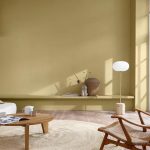Understanding Different Types of Plaster Finishes and Their Uses
Plaster finishes are the unsung heroes of construction and design. They form the canvas upon which our homes and buildings stand out. From rustic textures to sleek, modern aesthetics, plasterers can transform any space with its versatile finishes. But how much do you really know about the different types of plaster finishes and their unique applications? Let’s dive into this world and uncover the beauty and functionality of each.
Smooth Finish
When you picture a classic wall, chances are you’re envisioning a smooth plaster finish. This type is a favourite in modern homes and offices for its clean, polished appearance. If you’re in Auckland and need such a finish for your walls, calling an expert in plaster repair in Auckland will be your best bet.
How it’s done: A fine layer of plaster is applied and troweled repeatedly to create a silky, smooth surface. It’s often finished with a touch of sandpaper for ultimate refinement.
Best uses:
- Ideal for contemporary interiors where simplicity is key.
- Works wonderfully as a base for paint or wallpaper.
Pro tip: To maintain the sleek look, use high-quality paint that complements the surface’s even texture.
Rough Cast Finish
If you’re after a rugged, earthy vibe, the rough cast finish is your go-to. Also known as “spatter dash,” this finish gives walls a durable and textured appearance. The durability of this finish is why it’s a favourite for regions with harsh climates.
How it’s done: A mix of coarse aggregates like gravel or crushed stones is thrown onto a wet plaster base, creating a rough texture.
Best uses:
- Perfect for exterior walls as it’s weather-resistant.
- Commonly used in countryside homes and rustic designs.
Sand Faced Finish
Sophisticated yet subtle, the sand-faced finish is popular for its fine, gritty texture. It strikes the perfect balance between smooth and rugged.
How it’s done: Sand is mixed with cement and applied in two coats. The first coat evens the surface, while the second coat, with fine sand, gives it its signature texture.
Best uses:
- Exterior walls of residential buildings.
- Provides a classy, non-reflective appearance.
Pro tip: Choose neutral paint shades to enhance the natural texture of this finish.
Textured Finish
Want to get creative? Textured finishes open a world of artistic possibilities. From waves to geometric patterns, textured plaster finishes are all about making a statement.
How it’s done: Various tools like brushes, combs, or rollers are used to create unique patterns on the wet plaster.
Best uses:
- Accent walls in living rooms or bedrooms.
- Commercial spaces that demand a touch of flair.
Pebble Dash Finish
The pebble dash finish brings a playful and tactile quality to the walls. It’s a crowd-pleaser in both residential and commercial spaces.
How it’s done: Small pebbles or gravel are thrown onto a wet plaster base, where they adhere firmly, creating a bumpy texture.
Best uses:
- Exterior walls for homes looking to stand out.
- Adds visual interest to garden walls and fences.
Pro tip: Regular maintenance is key to keeping the pebbles intact and vibrant over time.
Stucco Finish
Stucco is a timeless plaster finish that’s as practical as it is beautiful. Its versatility allows it to adapt to a variety of styles, from Mediterranean villas to modern urban homes.
How it’s done: A blend of cement, sand, and water is applied in layers and can be smoothed or textured, depending on your preference.
Best uses:
- Exterior walls for a classic, weather-resistant look.
- Interior accent walls for a touch of elegance.
Fun fact: Stucco’s durability makes it a staple in earthquake-prone areas.
Venetian Plaster Finish
Luxury meets artistry with Venetian plaster. Its glossy, marble-like appearance exudes sophistication.
How it’s done: A mix of lime, marble dust, and pigments is applied in thin layers, with each layer polished to achieve a reflective surface.
Best uses:
- High-end interiors such as hotels, galleries, and upscale homes.
- Feature walls that demand attention.
Pro tip: Opt for warm lighting to enhance the natural shimmer of this finish.
Skim Coat Finish
A skim coat finish is the master of disguise. It’s used to repair and refresh old or damaged walls, creating a flawless surface.
How it’s done: A thin layer of plaster is spread over the wall to even out imperfections.
Best uses:
- Renovation projects.
- Preparing walls for paint or wallpaper.
Pro tip: Ensure the underlying surface is clean and stable for the best results.
POP Finish (Plaster of Paris)
Plaster of Paris (POP) finishes are the crown jewel of decorative plasterwork. They’re perfect for adding intricate details and ornamentation.
How it’s done: POP is applied in layers and moulded into desired shapes or patterns.
Best uses:
- Ceiling medallions, cornices, and wall mouldings.
- Creating a statement ceiling that wows.
Pro tip: Regular cleaning ensures POP details remain crisp and eye-catching.
Closing Remarks
Plaster finishes offer more than just aesthetics; they bring functionality, personality, and even sustainability to your walls. Designing a cosy home, a modern office, or a rustic retreat? There’s a plaster finish to match your vision. So, the next time you’re planning a renovation or new build, just go with the right plaster finish—it’ll be a game changer.


 Previous Post
Previous Post Next Post
Next Post
